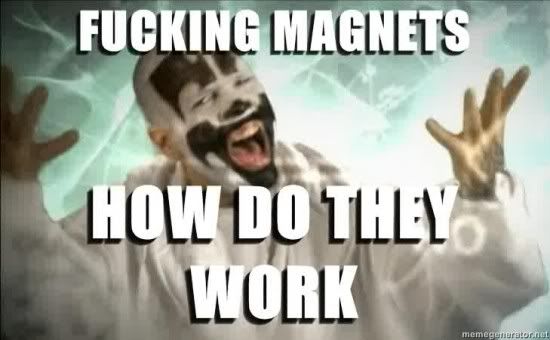General Discussion
Related: Editorials & Other Articles, Issue Forums, Alliance Forums, Region ForumsThe amount of space junk around Earth has hit a 'critical density'— and it could jeopardize our
space missions.
Since humans launched Sputnik 1 in 1957, we have polluted the once-empty space around Earth to the point that it is now becoming dangerous, according to former NASA scientist Donald Kessler.
"We're at what we call a 'critical density' — where there are enough large objects in space that they will collide with one another and create small debris faster than it can be removed," Kessler recently told Marketplace.
For nearly 20 years, Kessler (who was retired until very recently) lead NASA's Orbital Debris Program Office, which keeps track of all the growing clutter around Earth.
He predicts that eventually, there will be so much space junk that leaving Earth to explore deep-space will be impossible. That includes sending satellites to distant stretches of the solar system, like Pluto, and manned-missions to Mars.
Something must be done, he says. So he's come out of retirement to help find a solution.
http://www.msn.com/en-us/news/technology/the-amount-of-space-junk-around-earth-has-hit-a-critical-density-%E2%80%94-and-it-could-jeopardize-our-space-missions/ar-AAeGCnA?li=BBieTUX&ocid=mailsignout
bluedigger
(17,086 posts)
Guy Whitey Corngood
(26,497 posts)
Flying Squirrel
(3,041 posts)But I can't find any updates on the status of the JAXA project since Jan 2014.
bigwillq
(72,790 posts)the whole solar system.
Sounds about right.
Mnemosyne
(21,363 posts)Lancero
(3,002 posts)The risk in this is a ablative cascade, otherwise known as the Kessler Syndrome.
Basically, junk hits junk. Junk breaks apart into smaller peices of junk. Pieces of junk shreds a satilite, making more pieces of junk - both large and small pieces - and repeat.
Collisions up in the junk belt aren't uncommon, they happen pretty frequently. However, most of these collisions are from peices already flying around, so two pieces of junk colliding doesn't really affect us. For the most part, the collisions are predictable so it's possible to move the satellites around to avoid a collision.
However, some collisions are unavoidable. In cases like this, the satellite is maneuvered to try and ensure that the resulting debris doesn't pose a risk to any other satellites.
It's the unavoidable collisions that pose the most risk, especially if the target is a dead or disabled satellite that can't be maneuvered to create a more predicable debris path.
Worst case scenario for a unavoidable hit to a satellite is a cascading effect, where the satellite breaks apart, hits other satellites, they break apart, and repeat until every satellite is ripped up by the resulting cascade of junk, junk in so great of numbers that they can't all be tracked and dodging one hit will just line you up for three or four more. End result to the Kessler Syndrome is so much junk flying around that nothing can be sent up since it would immediately be ripped apart.
Not a lot of people think about this, but satellites are a key part to modern life. They are critical for telecoms, which is the what would hurt the most to lose, but are also the backbone to meteorology. And, of course, the one that most people would notice first - Satellite tv. (Well, unless you're currently driving at the time - In this case, you can kiss GPS good bye)
You know something scary to think about though? North Korea has the ability to launch satellites. If they really, really, wanted to they could give the entire world a nice big middle finger by intentionally setting this off.
IDemo
(16,926 posts)They operate at or around 20,000 miles up, far out of the cloud of debris in low to medium Earth orbit.
Katashi_itto
(10,175 posts)rusty quoin
(6,133 posts)MohRokTah
(15,429 posts)Garbage Men in SPACE!!!
rusty quoin
(6,133 posts)postulater
(5,075 posts)mrdmk
(2,943 posts)sylvanus
(122 posts)Rex
(65,616 posts)No wonder other galaxies are moving away from us...we trash up the place...any place. Cosmic rental prices are way down! Thanks Earth! Wait until we learn how to dump all our trash into a blackhole!